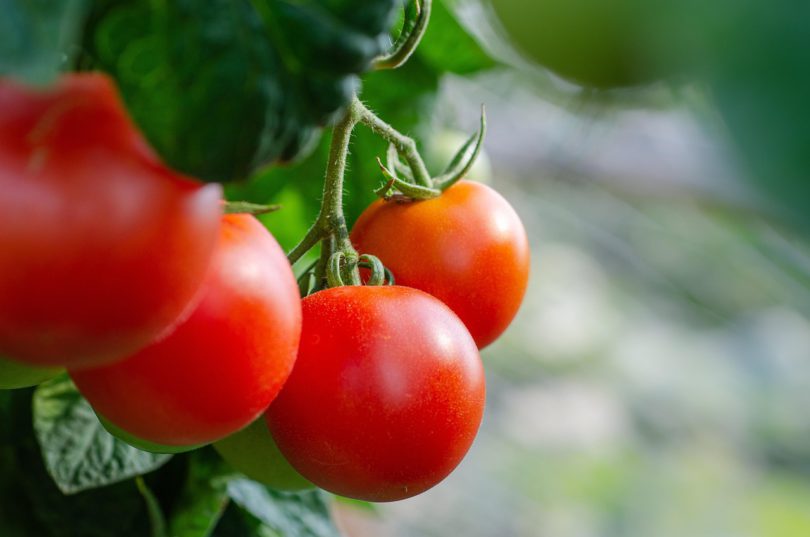The Tomato: A Love Story with a Rocky Start
Oh, tomatoes, you sneaky little red fruits! A staple now in our salads, pastas, and pizzas, but back in the day—hoo-boy!—you would’ve given folks the heebie-jeebies just by showing up to the dinner table. Wild to think that people actually believed these innocent fruits were downright deadly. I mean, picture it—sheer confusion! A fruit so bright, so inviting, yet inspiring pure dread. Sounds dramatic, right? But let’s face it, drama is kinda our thing.
Travel back with me to the 16th century, a time when explorers were roaming the globe like they were on some reality show, shakin’ up culinary traditions and sparking a bit of paranoia along the way. Our dear tomato, officially known as Solanum lycopersicum (fancy, huh?), decided to gate-crash Europe after a cool trip from South America. You’d think this was the start of a beautiful culinary romance, but no, this tale’s full of twists and turns!
The Fearful Mistake
Europeans, bless their skeptical hearts, eyed tomatoes like they might sprout legs and dance off the tables. Can’t totally blame ’em, though. Tomatoes had some pretty dodgy relatives in the nightshade family—like belladonna and mandrake, known for their nasty reputations. ‘Guilty by association’ seems to fit here, don’t ya think?
And hey, we’ve all got that one weird uncle at family gatherings, right? It’s human nature to give the side-eye to new things, or anything with a whiff of danger about it. To folks back then, biting into a tomato felt like playing a game of culinary roulette with the devil himself.
Things got especially bonkers in 18th-century Europe. The upper crust obsessed over whether tomatoes were good enough for their fancy menus or should just be yanked out like garden ruffians. Spoiler: they often chose the latter.
A Serving of Skepticism
Oh, and here comes my fave anecdote from those times—so, ripe tomatoes apparently wiped out some aristocrats. Or so the story goes. The real villain? Pewter plates! The tomato’s acidity pulled lead from the pewter, causing quite the scandalous dinner debacle. Isn’t it just deliciously ironic?
You can bet these tragedies just fueled tomato hysteria. Blame had them by the stem, and those poor tomatoes, while innocent, had to lug around accusations like unwanted baggage, simply wanting to be a part of European dishes. Heartbreaking, really!
The Problem with First Impressions
Oh, first impressions. They’re a riot sometimes. We snap-judge in an instant, leaning on bits of hearsay and hunches. I swear, the tomato was a casualty of classic human anxiety. Just shows, we fear what we don’t get, often with a little comedic flair.
Ever side-eye a new dish and think, “Pssh, that’s got to be gross”? That’s probably why tomatoes ended up chilling out as backyard decor instead of stars of the kitchen show. Just picture it—juicy red tomatoes hanging outside, while some sad and bland dish sizzles away inside. Such a culinary letdown!
Turning the Tide
By the late 1700s, a few brave souls decided to rewrite history for our sidelined tomatoes. Either they were bold or just curious eaters. Thomas Jefferson, Revolutionary war hero and tomato enthusiast, stood among them. Tommy didn’t just go for American independence—he was the tomato’s knight in shining armor. Good ol’ TJ grew them at Monticello, sowing seeds for a new delicious era.
Don’t we just adore those who splash a little rebel onto the canvas? The ones who deviate, making waves for the rest of us. With Jefferson and his veggie pals leading the way, the tide started turning. The underdog had its day, finally!
Challenging the Tomato Taboo
But hold on—Italy was already all about that tomato life. The sunny climate there worked wonders, and slowly, surely, tomatoes made their way into sauces and pastas. You’d think tomatoes had finally found their groove, and indeed, in some regions, they were a hit.
Food isn’t just about taste; it’s stories wrapped in flavor. The Italian tomato saga reflects a tale of culture and courage, from suspicions to savory sensations. People weren’t all-out rebellions against convention; they just took a chance, tasted the fruit, and lived on (thank goodness!). Once a trend catches on with the hip crowd, the rest will follow—eventually.
Tomato Love
Fast-forward to the tomato renaissance! No longer scorned, they burst into the limelight, evolving from reviled to royalty. The tides of history and taste had finally turned, and the tomato found its place in our kitchens and hearts.
Nowadays, imagining life without tomatoes feels like a bleak, bland universe. But boy, look how far we’ve come, unraveling the tomato’s sweet little history. Today’s flares of flavor were once tangled in fears. A good reminder that today’s “no-go” might just be tomorrow’s go-to delicious delight.
Raise a glass (or a fork) to the triumphs of tomatoes—a tale of risk, relish, and a little red fruit that refused to be forgotten. Next time you savor a juicy tomato, think back to when their reputation was as tangled as spaghetti. Ah, the resilience of these little fruits shows that, in the end, time, truth, and good taste win out.
Once feared, now cherished, tomatoes brighten our plates with their rosy presence. And that, my friends, is a redemption story worth savoring, one tangy bite at a time!

